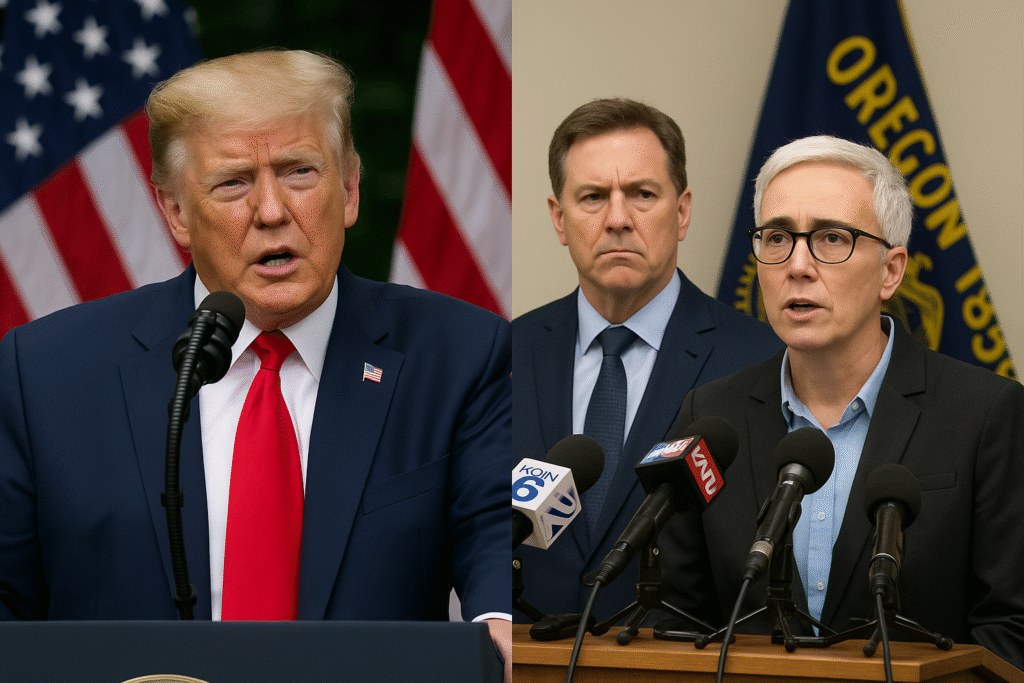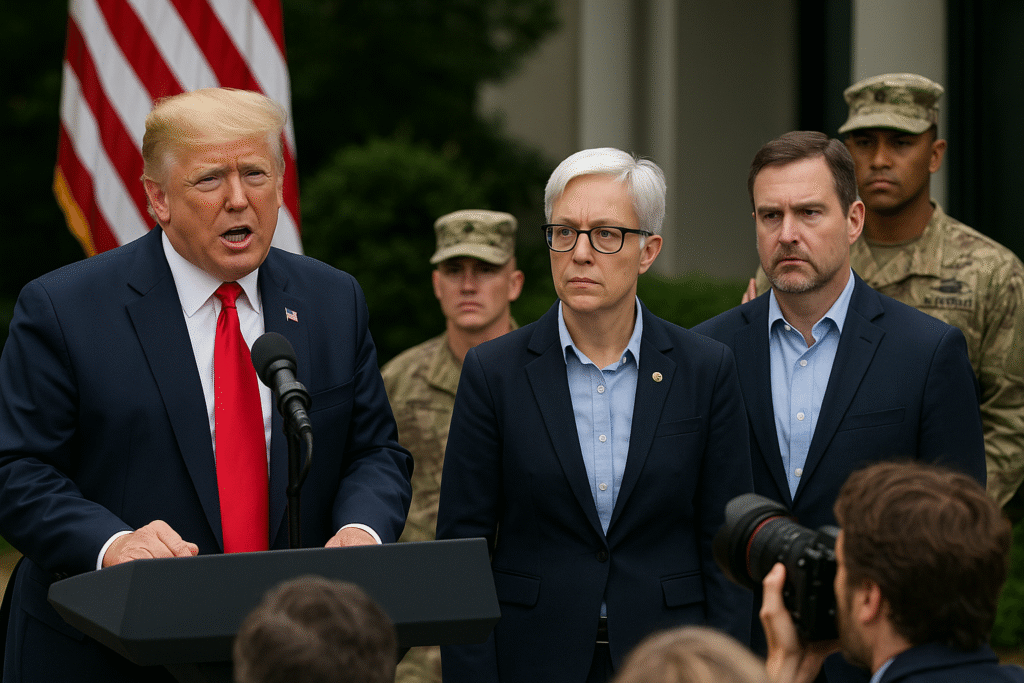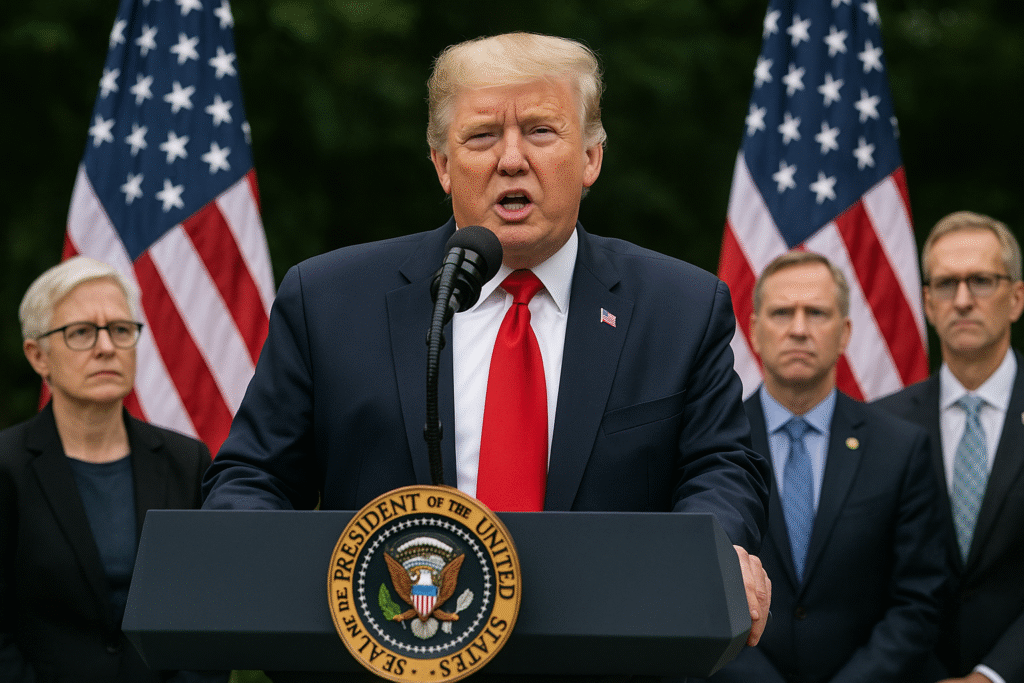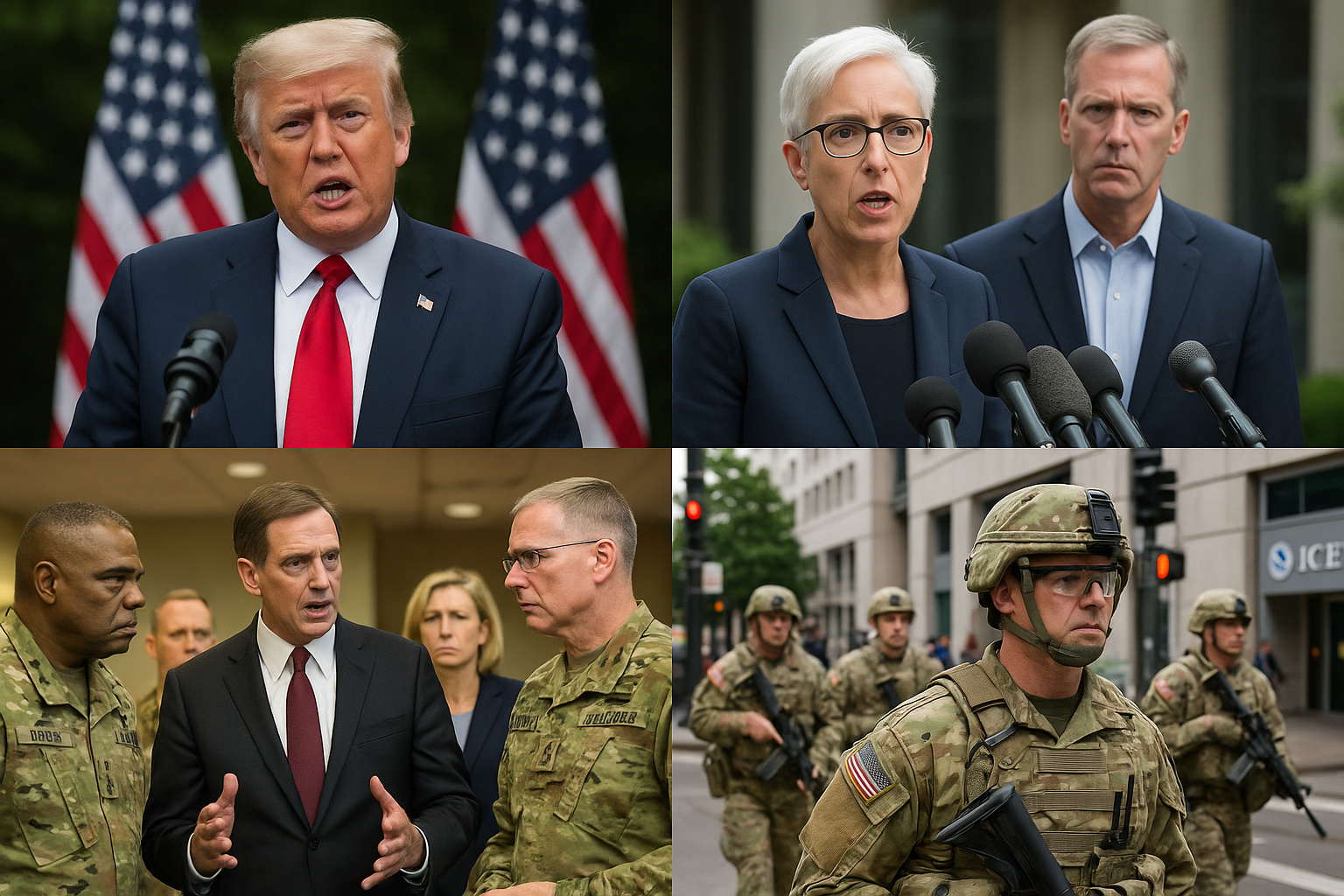Troops to Portland: On September 27, 2025, President Donald Trump announced he would “provide all necessary troops” to Portland, Oregon, to protect federal facilities — especially an ICE building — authorizing “full force, if necessary.” The news immediately sparked sharp pushback from Oregon leaders (including Governor Tina Kotek and Portland Mayor Keith Wilson), raised legal questions about how — and whether — the U.S. military can be used in American cities, and reminded locals and readers nationwide why federal deployments on U.S. soil are historically fraught.
This long-form guide explains the facts, the legal mechanics, the local reaction (with Tina Kotek front-and-center), what troops could do, what they almost certainly won’t do, and practical next steps for Portland residents. All information is verified and current as of September 27–28, 2025. Sources are listed at the end; I cite load-bearing facts throughout so you can read the original coverage.
TL;DR — the short version
- President Trump said he would send U.S. troops to Portland to protect ICE facilities and other federal assets.
- Oregon Governor Tina Kotek and Portland Mayor Keith Wilson loudly opposed the plan, saying federal troops are unnecessary and would be an overreach. They urged calm and de-escalation.
- The Pentagon and Oregon National Guard said they had not received local requests or full details; legal barriers like the Posse Comitatus Act and anticipated court challenges make large-scale active-duty deployments complicated and legally contested.
- For Portlanders: expect a heavy media cycle, local press briefings, legal fights, and temporary federal presence around the ICE building — but not necessarily broad street patrols by uniformed active-duty troops without additional legal steps.
1) What Trump announced
On Sept. 27, 2025, the President posted that he was directing the Department of Defense and Department of Homeland Security to deploy troops to Portland and to ICE facilities, saying federal personnel and buildings were “under siege” from what he called domestic terrorists (naming groups like Antifa). Trump said he was “authorizing full force, if necessary,” language that suggests readiness to deploy armed units. News organizations reported the announcement within hours.
Why that matters: presidents can direct federal resources, but domestic use of the U.S. military is governed by statute, precedent and, often, court review — which means announcements can trigger action but don’t always translate into immediate, wide-scale ground deployments.

2) Tina Kotek, Portland’s mayor and other local officials: what they said
Oregon Governor Tina Kotek publicly rejected the notion that Portland is “war-ravaged,” saying she directly told the President that “Portland is doing just fine” and that federal troops were not needed. Portland Mayor Keith Wilson said the “number of necessary troops is zero.” Local leaders staged news conferences urging residents to remain calm and warning against provocation. Oregon’s congressional delegation also issued statements demanding no federal force be used without coordination.
Bottom line: state and city leaders are framing the deployment as unnecessary and dangerous; they’re also preparing to challenge it politically and legally if it proceeds unilaterally.
3) A quick primer: federal troops vs. local law enforcement — what the law says
Two legal guardrails matter here:
- Posse Comitatus Act (1878) generally forbids use of the active-duty military to execute domestic law except where authorized by the Constitution or Congress (for example, Insurrection Act exceptions). That statute is why presidents and attorneys often prefer to use the National Guard (under state control) rather than active-duty troops.
- Insurrection Act allows a president to deploy federal troops domestically in specific extreme circumstances (to suppress insurrection, enforce federal law when states cannot). But invoking it is politically and legally controversial; courts have previously limited deployments seen as overbroad. Expect rapid legal scrutiny if an active-duty deployment begins.
In short: White House announcements set the policy tone, but legal frameworks and rights protections shape what troops can lawfully do inside U.S. cities.
4) What “troops to Portland” might practically look like
There are several realistic deployment models — each has different constraints:
- Federal law-enforcement surge (DHS/DOJ agents): Increasing the number of federal agents (ICE, CBP, FBI, DEA, U.S. Marshals) around a federal facility is the easiest step. Those officers already operate domestically and can be deployed without moving active-duty soldiers. This is the most likely immediate action.
- National Guard under state control (Title 32): The Oregon governor can activate the Guard for state missions; the federal government can fund or support that under specific authorities. Guard deployments under state control are a common way to boost security without triggering Posse Comitatus issues. But Gov. Kotek has opposed federal unilateral action — she controls the Oregon Guard unless federalized.
- Active-duty U.S. military (Title 10) in a domestic role: This is legally sensitive and normally reserved for extreme emergencies. If used, it would likely provoke immediate legal action and political opposition. Trump’s “full force” language hints at an appetite to use strong measures, but logistics, legal counsel and Pentagon posture matter.

5) Why the White House says it wants to send troops now
The administration frames the move as protecting federal employees and facilities — especially ICE — from assaults, vandalism, and what it labels domestic extremist activity. Recent events around ICE facilities nationally (including protests and, in one case, an attack in Dallas earlier in September) have been cited by the White House as justification for a show of force. Critics argue the deployments are political theater aimed at rallying a base and stoking divisions.
6) Local reality: is Portland “war-ravaged”?
Short answer: No, by most public metrics Portland is not in a state of widespread urban warfare. Local leaders and many residents point to reduced protest activity compared with 2020–21, recovering downtown economic activity, and police and community efforts to reduce violence. That’s why Governor Kotek and Mayor Wilson pushed back so strongly — they say federal claims don’t match Portland’s current public-safety reality. Independent reporting and local data cited by officials support that view.
That tension — national rhetoric vs local data — is a central part of the political dispute.
7) The Pentagon’s posture — caught off guard?
Several outlets reported the Pentagon was not fully briefed in advance of the announcement and scrambled to understand orders and legal authorities. Defense officials typically require detailed mission planning and legal review before sending troops into a U.S. city. That means actual troop movements (beyond federal law-enforcement or National Guard coordination) may not be immediate. Expect follow-up statements from the Pentagon clarifying what it will — and won’t — execute.

8) What residents should and shouldn’t do right now
- Do: Follow official Portland and Oregon social channels for verified instructions (city, county, and state emergency pages). Stay informed from local outlets (OPB, Portland Tribune) and avoid rumor-driven social posts. If you live or work near federal buildings, be aware of temporary road closures or increased officer presence.
- Don’t: Go to the ICE facility or other federal sites to “confront” arriving forces. Demonstrations are constitutionally protected, but converging on tense flashpoints can escalate risk. If you plan to protest, follow legal guidance and community organizers’ safety plans.
If you have questions about voter, legal, or civil-rights impacts, contact local legal-aid or civil-liberties organizations for guidance rather than relying on social rumor threads. Local elected officials can also provide verified advice.
9) Political and legal fallout to watch
Expect a fast-moving mix of:
- Legal challenges from state officials and civil-rights groups arguing unlawful domestic use of troops. Past court rulings have checked expansive federal deployments.
- Congressional reaction — Oregon’s congressional delegation already demanded that troops stay away; national lawmakers will debate the authority and oversight of such deployments.
- Local-state negotiations — Governors and mayors can often blunt or redirect federal operations through political pressure and public messaging; watch whether the administration backs down, shifts to DHS agents, or seeks formal legal authorizations.
10) What this episode teaches about modern federal-local tensions
The Portland episode sits at the intersection of several tensions:
- Security vs. civil liberties: Protecting federal property is legitimate; so is guarding the right to protest. Deployments heighten the risk of infringing civil liberties.
- National politics vs. local governance: National leaders can shape narratives about disorder even where local leaders disagree — and those narratives can justify federal action.
- Law vs. rhetoric: A president can announce intent quickly; the law and institutions often slow actual operational moves down — which is why court fights and Pentagon caution are predictable.
Portland is the latest test case in a pattern of federal-local clashes that have recurred since 2020; how it resolves will set both practical precedents and political signals for other U.S. cities.
Verified sources & working links (checked Sept 27–28, 2025)
These are the primary, authoritative news and official sources used above. All were live when checked.
- Oregon Public Broadcasting (OPB) — ‘Portland is doing just fine’: Oregon governor rejects Trump’s plan to send troops to the city. (includes quotes from Gov. Tina Kotek and Mayor Keith Wilson.) (opb)
https://www.opb.org/article/2025/09/27/oregon-portland-trump-troops-reaction/ - Portland Mayor’s Office — Mayor Wilson responds to President’s threat to send troops to Portland (official statement). (Portland.gov)
https://www.portland.gov/mayor/keith-wilson/news/2025/9/27/mayor-wilson-responds-presidents-threat-send-troops-portland
Final practical notes and a quick checklist for Portlanders
- Bookmark and monitor the official City of Portland and Oregon governor pages for verified advisories.
- Avoid federal facilities (including the ICE building on SW Macadam) while the situation is fluid. (opb)
- If you plan to protest, coordinate with established, local organizers and follow safety guidance; carry ID and a way to access legal aid contact numbers.
- If you’re concerned about civil liberties or legal questions, contact local civil-rights groups (e.g., ACLU of Oregon) for guidance rather than relying on social speculation.
- Expect court actions and political debates — this will likely play out in the news for days to come; rely on reputable sources and official briefings for updates.
Disclaimer
This article summarizes reporting and official statements current as of September 27–28, 2025. It is informational only and not legal advice. Because the situation is fluid—legal rulings, Pentagon briefings, and official deployments may change—rely on the official sources linked above (city, state, federal) for authoritative instructions and updates. Images used in this article are royalty‑free or licensed for commercial use and are provided here for illustrative purposes.
